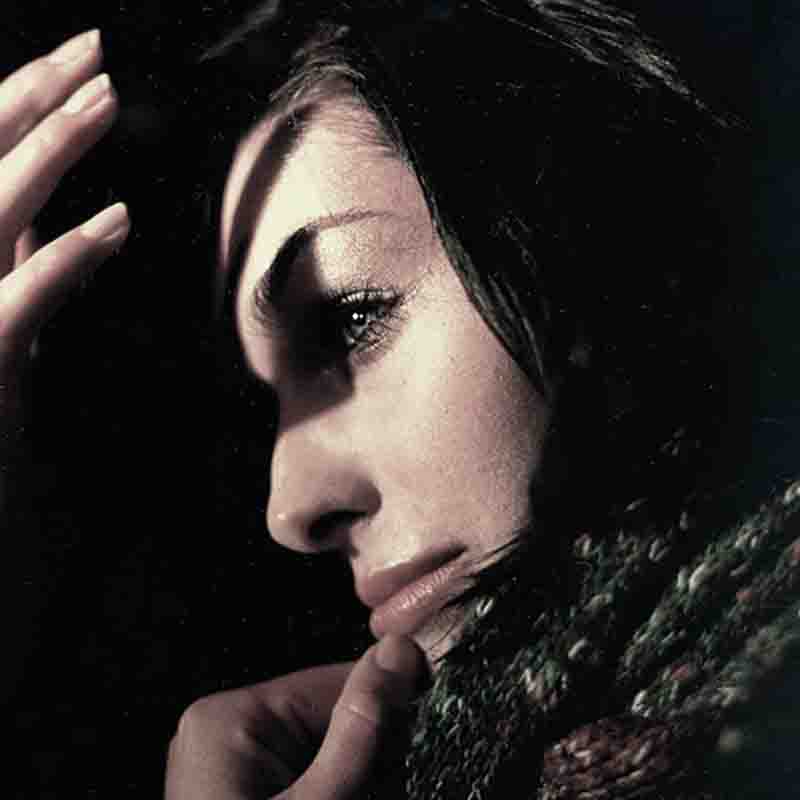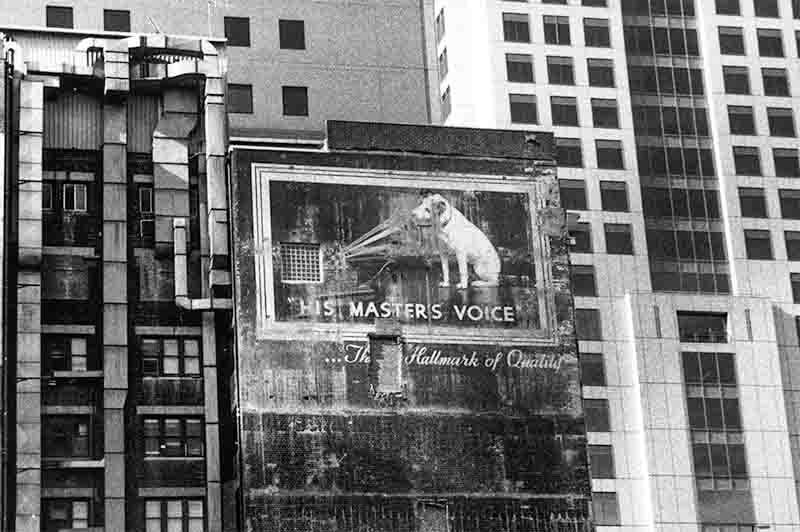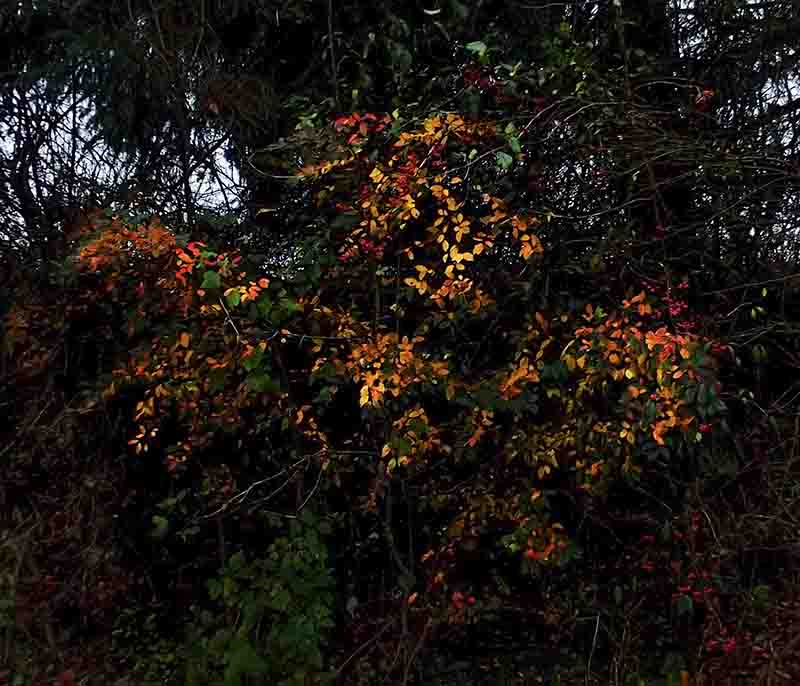Storytelling Through Imagery
At its core, photography is about freezing moments in time, capturing situations that tell stories, trigger emotions and to preserve memories. Catching scenes with a camera requires the ability to recognize and seize fleeting moments that are of particular relevance.

Photographers unveil unique perspectives, offering viewers a fresh gaze into the ordinary and a new appreciation for the extraordinary.

Photography is a dance of light and shadow, a play that shapes narratives, adding depth and intrigue to every visual tale.

Photography captures the ephemeral beauty of fleeting moments, turning the transient into a timeless narrative.
Frozen Moments through Photography
Photography is a powerful art form and a scientific endeavor that has evolved significantly over time.
Rooted in the capture of moments, photography serves as a medium for storytelling, preserving memories, and communicating emotions.

Unlike black and white photos, which capture the world in shades of gray, color photography replicates the world's vibrant hues. Developed in the 1800s, it initially involved complex methods using multiple exposures. Color photography became widespread in the mid-20th century, transforming how we see the world.
Capturing a moment in time: The basic concept of photography
Photography consists of various components that make it possible to shoot and, more importantly, capture images. Throughout history, a primal desire of mankind has been to freeze their image and the world around them. The fundamentals of lenses and the camera had already been discovered by science before the invention of photography.
✅ Subscribe and become a channel member:
12 Facts to know about Photography
-
Camera Types: There are various types of cameras, including DSLR (Digital Single-Lens Reflex), mirrorless, and point-and-shoot, each offering different features and capabilities.
-
Composition: Understanding composition principles such as the rule of thirds, leading lines, and framing is crucial for creating visually appealing photographs.
-
Lighting: Proper lighting can make or break a photo. Techniques like using natural light, artificial lighting, and understanding exposure settings (shutter speed, aperture, ISO) are essential.
-
Genres: Photography encompasses diverse genres such as portrait, landscape, wildlife, street, and macro photography, each requiring specific skills and approaches.
-
Post-Processing: Editing software like Adobe Lightroom and Photoshop allows photographers to enhance their images, adjust colors, contrast, and apply creative effects.
-
Depth of Field: Understanding depth of field (how much of the image is in focus) and controlling it using aperture settings is fundamental for creating impactful photographs.
-
Camera Accessories: Accessories like tripods, lenses (wide-angle, telephoto, prime), filters, and external flashes can significantly enhance photographic capabilities.
-
Exposure Triangle: Mastering the relationship between shutter speed, aperture, and ISO sensitivity is essential for achieving proper exposure in various lighting conditions.
-
White Balance: Adjusting white balance ensures accurate color representation in photos, whether under natural light, fluorescent, or tungsten lighting conditions.
-
Legal Considerations: Understanding copyright laws, usage rights, and permissions when photographing people, private property, or for commercial purposes is crucial.
-
Technology Advancements: Advances in camera technology, including high-resolution sensors, AI-powered features, and drones, continue to redefine photographic possibilities.
-
Career Opportunities: Photography offers diverse career paths, including freelance work, studio photography, photojournalism, commercial photography, and fine art photography.
In the world of photography, every click of the shutter is a step in a journey of discovery and expression. Embrace the challenges, stay curious, and keep capturing the world around you.
Essential Photography Tips for Beginners and Pros

Lens technology is a critical component of photography, influencing aspects such as focal length, aperture, and optical quality. It plays a pivotal role in shaping the visual characteristics of photographs, affecting depth of field, perspective, and image clarity.
From its historical origins to contemporary practices to fine art photography, the journey of photography is marked by technological advancements, creative innovations, and an enduring impact on visual culture.
Certain moments are iconic, representing a convergence of elements that create a powerful visual impact.
A photojournalist capturing a protester's defiant stance or a wildlife photographer capturing the exact moment of a predator's pounce; these instances go beyond static subjects.
To grasp photographic moments, it is necessary to recognize the emotional resonance within a scene.
An open smile, a tearful embrace or a triumphant gesture, all these aspects communicate an emotional depth that goes beyond the mere visual information.
From the exuberant laughter at a party to the seductive look in fashion photographs, expression plays a central role in infusing depth and credibility into photographs.
Photography is the nuanced intersection of art, technology and storytelling, where visual narratives are created through the capture and manipulation of light. It involves the use of specialized equipment, such as cameras, to record and preserve instants of time.
Photography Timeline
| Time Period | Music Genre | |
|---|---|---|
| 5th Century BC | Ancient Greeks discover basic principles of optics, including the camera obscura effect. | |
| 1021 | Persian scientist Ibn al-Haytham writes about the camera obscura and pinhole imaging. | |
| 1558 | Giovanni Battista della Porta describes the camera obscura in his book "Magia Naturalis." | |
| 1727 | Johann Heinrich Schulze discovers that silver nitrate darkens when exposed to light, a precursor to photosensitivity. | |
| 1826 | Joseph Nicéphore Niépce captures the first permanent photograph using a bitumen-coated pewter plate. | |
| 1837 | Louis Daguerre develops the daguerreotype process, announcing it as a practical and commercial method of photography. | |
| 1840 | William Henry Talbot introduces the calotype, a paper negative process, and patents it. | |
| 1851 | Frederick Scott Archer introduces the wet plate collodion process, offering a more practical alternative to daguerreotypes. | |
| 1888 | George Eastman introduces the Kodak camera, the first mass-produced camera, and film roll, making photography accessible to the public. | |
| 1900 | Lumière brothers invent the Autochrome plate, the first commercially successful color photography process. | |
| 1927 | Edwin Land develops Polaroid instant film, allowing photographs to be developed in minutes. | |
| 1936 | Kodak introduces the Kodachrome color film, popularizing color photography. | |
| 1948 | Edwin Land releases the first Polaroid Land Camera, revolutionizing instant photography. | |
| 1957 | The first digital image is produced by Russell Kirsch at the National Institute of Standards and Technology (NIST). | |
| 1963 | Polaroid introduces the Swinger camera, a popular and affordable instant camera. | |
| 1970s | Introduction of autofocus systems in cameras for the first time. | |
| 1980s | The development of the first consumer digital cameras, though they remain expensive and have low resolution. | |
| 1990s | Advancements in digital technology lead to the rise of affordable and higher-resolution digital cameras. | |
| 2000s | The era of digital photography takes over film, with advancements in sensor technology and image processing. | |
| 2010s | Smartphone cameras become increasingly sophisticated, leading to a surge in mobile photography. | |
| 2020s - Present | Continued advancements in digital photography, including AI technology, mirrorless cameras, high-resolution sensors, and computational photography. |
This photography timeline highlights key events and developments in the history of photography, from early experiments with light-sensitive materials to the widespread adoption of digital technology in the present day.
Discover the Techniques Behind Photography
-
Shutter speed: Shutter speed in photography refers to the amount of time the camera's shutter remains open to expose the camera sensor to light. It is one of the three components of the exposure triangle, along with aperture and ISO, that determines the overall exposure of a photograph.
-
F-stop: F-stop, also known as aperture, is a fundamental concept in photography that refers to the size of the opening in the lens through which light passes. It is one of the three components of the exposure triangle, along with shutter speed and ISO sensitivity, that determines the overall exposure of a photograph.
-
Film speed: Film speed, also known as ISO sensitivity, refers to the sensitivity of the film or digital sensor to light. It is a fundamental aspect of photography that affects how quickly the film or sensor reacts to light, thereby influencing exposure and image quality.
Practice regularly, study composition techniques, experiment with different settings, learn from others' work, and seek constructive feedback to continuously improve your photography.
Photography as Visual Storytelling

Lens technology is a critical component of photography, influencing aspects such as focal length, aperture, and optical quality. It plays a pivotal role in shaping the visual characteristics of photographs, affecting depth of field, perspective, and image clarity.
Photography, in its essence, is a captivating form of visual storytelling.
It extends beyond the realms of documentation, offering a unique language through which photographers communicate emotions, narratives, and perspectives.
Whether capturing a fleeting moment or crafting a carefully composed scene, photographers wield the power to tell stories that resonate with viewers.
The lens becomes a storyteller, translating the photographer's vision into a narrative that transcends words.
The magic of photography lies in its ability to freeze moments in time, allowing stories to unfold in a single frame.
Expressive Elements in Photography
At the heart of captivating photography are expressive elements that elevate a mere image to a compelling narrative.
Composition, lighting, and timing are the brushes with which photographers paint their stories.
The interplay of these elements creates a visual symphony, where emotions are orchestrated, and narratives are woven.
Composition, as a foundational element, guides the viewer's gaze and shapes the overall mood.
Lighting, whether soft and diffused or dramatic and harsh, sets the tone and accentuates emotions.
Timing, the decisive moment, captures the essence of a story, freezing it in time.
Understanding and mastering these expressive elements are key to unlocking the full potential of photography as a storytelling medium.
Transition from Analog to Digital

Analog photography, with its physicality and artistic nuances, stands as a homage to the origins of the craft, attracting enthusiasts who value the tangible and the poetic in the art of image-making.
The evolution of photography is marked by a transformative shift from analog to digital.
In the analog era, photographers relied on film rolls and darkroom techniques, fostering a meticulous and hands-on approach.
With the advent of digital photography, a paradigm shift occurred, bringing forth instant previews, limitless exposures, and post-processing capabilities.
While the analog era celebrated the tangible nature of film, the digital age ushered in a new era of efficiency, accessibility, and creative possibilities.
This section will delve into the advantages, challenges, and the overall impact of this transition on the field of photography.
Key Techniques in Photography
Photography is an art form that thrives on technique and skill.
Among the myriad techniques at a photographer's disposal, some stand out as fundamental pillars.
The rule of thirds, a compositional guideline, aids in creating balanced and visually appealing images.
Leading lines guide the viewer's gaze through the frame, adding depth and a sense of direction.
Framing, another essential technique, involves using elements within the scene to create a natural border, drawing attention to the subject.
These techniques, when mastered, contribute to the overall quality and impact of photographs, transcending the realm of mere snapshots.
Essential Camera Gear

Photography freezes fleeting moments, preserving them for eternity. Each click tells a unique story, a testament to the art of capturing time in a frame.
Central to a photographer's toolkit is the choice of camera and lenses.
Quality cameras with superior sensors and optics lay the foundation for capturing stunning images.
The lens, serving as the eye of the camera, plays a pivotal role in achieving specific photographic goals.
From wide-angle lenses for expansive landscapes to telephoto lenses for detailed close-ups, the choice of optics shapes the visual narrative.
This section will explore the significance of selecting the right camera gear to match the photographer's creative vision and the demands of the subject matter.
Tripods and Stability
In the quest for precision and sharpness, stability is paramount in photography.
The tripod emerges as an indispensable tool, providing a steady platform for the camera.
Whether shooting in low light conditions or employing long exposure techniques, a sturdy tripod ensures that the image remains crisp and clear.
Beyond tripods, photographers may explore other stabilizing tools and techniques to mitigate camera shake and elevate the overall quality of their work.
This section will delve into the importance of stability in photography and the role of tripods in achieving it.
Filters for Creative Effects
Filters, as accessories in photography, introduce creative effects and enhance image quality.
Polarizing filters, for instance, reduce glare and intensify colors, making skies pop and water appear clearer.
Neutral density (ND) filters, on the other hand, control the amount of light entering the lens, enabling longer exposures in bright conditions.
These creative tools allow photographers to manipulate light, control reflections, and infuse a distinct visual flair into their images.
Understanding the diverse applications of filters contributes to a photographer's ability to craft visually compelling and technically refined photographs.
Planning and Preparation for Successful Photography

Photographic art involves the application of creative and aesthetic principles to the process of image creation. It goes beyond mere documentation, emphasizing the photographer's unique vision and expression.
The choice of location plays a pivotal role in the success of a photographic endeavor.
Whether capturing portraits, landscapes, or urban scenes, scouting locations beforehand allows photographers to familiarize themselves with the terrain, assess potential compositions, and plan optimal shooting angles.
From the natural elements to the built environment, every location presents unique opportunities and challenges.
This section will guide photographers on how to choose and scout locations effectively based on the desired photographic goals.
Understanding Lighting Conditions

From minimalist photography to experimental and conceptual styles, photographers can find inspiration in the evolving landscape of visual expression.
Lighting, a cornerstone of photography, significantly influences the mood, tone, and overall quality of an image.
Natural light, with its dynamic variations, plays a crucial role in outdoor photography.
Understanding the nuances of lighting conditions, from the soft glow of sunrise to the warm hues of sunset, empowers photographers to harness light effectively.
This section will explore the importance of natural light, strategies for shooting during the golden hour, and the impact of lighting on the visual narrative.
Weather Considerations in Photography
Photography is intimately connected with the ever-changing dynamics of weather.
Different weather conditions can dramatically alter the mood and atmosphere of a photograph.
Whether under clear skies, during overcast days, or amid the drama of stormy weather, each condition presents unique photographic opportunities.
Photographers need to adapt to diverse weather scenarios, leveraging the elements to their advantage.
List of Photographic Genres

Photography is both a profession and a passion, offering endless opportunities for creativity and expression.
Photography is a varied technology that encompasses a broad spectrum of genres.
A basic framework can be created using these genres, yet the possibilities are endless as photographers continue to push the boundaries of this visual discipline.
Documentary Photography
-
Emphasis on capturing real-life events and situations.
-
Candid shots with minimal interference in the scene.
-
Focus on storytelling and conveying a narrative.
Portrait Photography
-
Highlights individuals or groups.
-
Emotionally expressive and focused on capturing personality.
-
Varied styles including formal, environmental, and candid portraits.
Fashion Photography
-
Emphasis on showcasing clothing, accessories, and style.
-
Often features models in stylized settings.
-
Plays with lighting, composition, and poses to create a visually appealing narrative.
Landscape Photography
-
Showcases outdoor scenes, often emphasizing nature.
-
Focus on capturing expansive vistas and natural beauty.
-
Pays attention to lighting conditions and weather for dramatic effect.
Macro Photography
-
Zooms in on extreme close-ups of small objects.
-
Reveals intricate details not visible to the naked eye.
-
Requires specialized equipment for close focusing.
Street Photography
-
Captures everyday life in public spaces.
-
Often candid and unposed, reflecting the spontaneity of street life.
-
Focus on documenting the human experience in urban environments.
Black and White Photography
-
Removes color to emphasize form, contrast, and texture.
-
Evokes a classic and timeless feel.
-
Highlights the interplay of light and shadow.
Architectural Photography
-
Focus on capturing buildings, structures, and interiors.
-
Emphasizes design elements, lines, and shapes.
-
Often includes both exterior and interior shots.
Wildlife Photography
-
Captures animals in their natural habitats.
-
Requires patience, telephoto lenses, and understanding animal behavior.
-
Highlights the beauty and diversity of the animal kingdom.
Aerial Photography
-
Shot from elevated positions, often using drones or aircraft.
-
Provides a unique perspective of landscapes, cityscapes, and events.
-
Emphasizes patterns, symmetry, and scale.
Night Photography
-
Captures scenes in low light or darkness.
-
Utilizes long exposures, tripods, and specialized equipment.
-
Highlights the beauty of city lights, stars, and artificial illumination.
Experimental/Abstract Photography
-
Focus on unconventional compositions and subjects.
-
Emphasis on shapes, colors, and textures.
-
Often involves intentional blurring, multiple exposures, or other creative techniques.
Travel Photography
-
Captures the essence of different cultures and locations.
-
Emphasizes storytelling through a visual journey.
-
Incorporates a mix of landscapes, portraits, and cultural details.
Food Photography
-
Showcases food in an appetizing and visually appealing way.
-
Pays attention to lighting, composition, and styling.
-
Often used in culinary blogs, magazines, and advertisements.
Underwater Photography
-
Captures scenes and life underwater.
-
Requires specialized equipment for waterproofing.
-
Showcases marine life, coral reefs, and underwater landscapes.
High-Speed Photography
-
Captures fast-moving subjects frozen in motion.
-
Requires fast shutter speeds and specialized equipment.
-
Often used in sports photography and capturing dynamic action.
Industrial Photography
-
Focus on capturing industrial processes, machinery, and workplaces.
-
Emphasis on portraying the scale and complexity of industrial settings.
-
May include elements of documentary and architectural photography.
Infrared Photography
-
Utilizes infrared light to capture unique and ethereal images.
-
Often renders foliage and landscapes in surreal colors.
-
Requires specialized infrared-sensitive equipment or post-processing techniques.
Time-Lapse Photography
-
Captures a series of images over time to show changes or movements.
-
Requires a stable platform, such as a tripod, and planning for intervals.
-
Often used to depict events like sunrise, sunset, or construction projects.
Vintage/Retrospective Photography
-
Emulates the style and aesthetics of historical photographic processes.
-
May involve using vintage cameras or applying filters for a nostalgic look.
-
Evokes a sense of the past and a connection to photographic traditions.
This style list encompasses a broad range of photography genres, each with its own unique characteristics and visual language. Photographers may explore and specialize in one or more of these styles based on their interests and creative vision.
Closing Thoughts on Photography
Photography, as a timeless and ever-evolving medium, invites individuals to explore their creativity, tell stories, and capture the beauty of the world around them.
The journey of a photographer involves continuous learning, experimentation, and a deep connection with the subjects and environments being captured.
As technology advances and new trends emerge, the core principles of photography remain rooted in expressing emotions, conveying narratives, and preserving the essence of moments frozen in time.
Photography: FAQ
Are you curious about music, art, technology, fashion, lifestyle, travel and beer?
If so, then you need to subscribe to the free Likewolf newsletter.
100% privacy. When you sign up, we'll keep you posted.
Scouting New Models
Fashion Industry Model Launch
